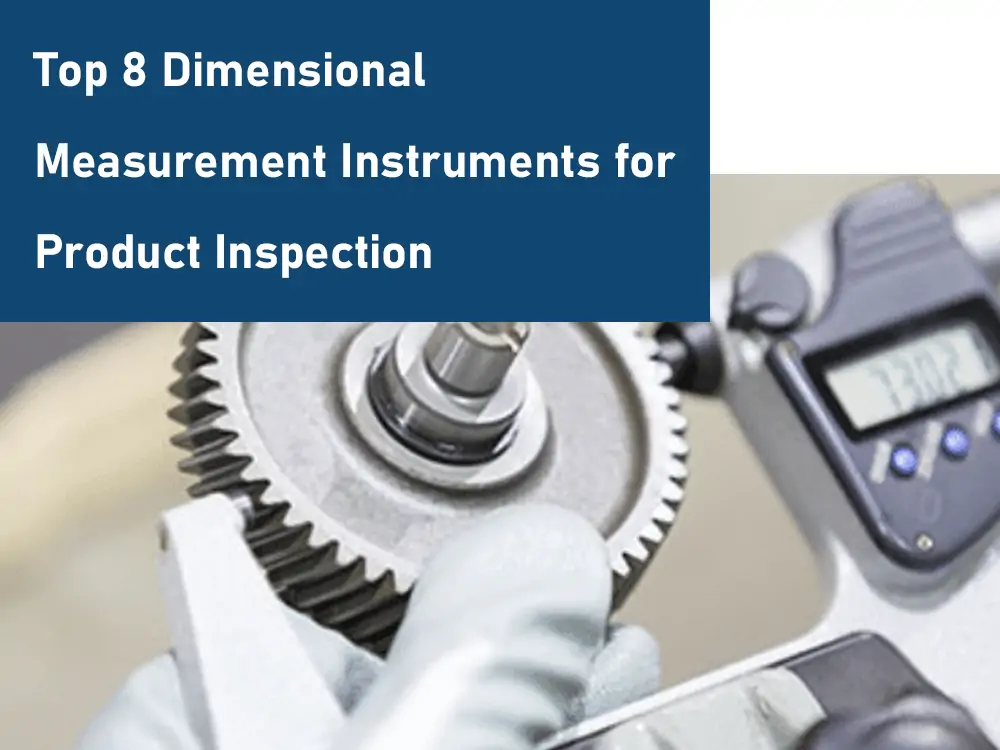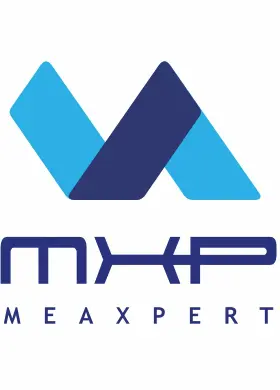
Inleiding
Productie bestaat uit verschillende fasen: planning, ontwerp, prototyping, fabricage en nabewerking. Meten en productinspectie zijn belangrijk om ervoor te zorgen dat alles gaat zoals gepland. Om de beste resultaten te behalen zijn zeer nauwkeurige meetinstrumenten nodig. Ze zijn cruciaal bij het omzetten van de visie van de ontwerper in realiteit.
Maatinstrumenten zijn apparaten die de fysieke kenmerken van een object meten, zoals hoogte, breedte, lengte, kromming of hoek. Meetinstrumenten worden geclassificeerd volgens hun werkingsprincipe. De meest voorkomende soorten meetinstrumenten zijn handgereedschap, pneumatische meters, CMM's, optische apparaten, op licht gebaseerde apparaten en vision-meetmachines.
Vandaag bespreken we 8 van de beste dimensionale meetinstrumenten waarvan uw bedrijf kan profiteren. Ze dekken niet alleen een groot aantal toepassingen, maar worden ook vertrouwd door marktleiders. Elke fabrikant heeft unieke behoeften op het gebied van precisie, nauwkeurigheid, oppervlakte-inspectie of transparantie. Van handgereedschap tot meetrobots, met deze uitgebreide lijst bent u bij ons aan het juiste adres.
Top 8 van dimensionale meetinstrumenten
Vision-meetsystemen
Machinale visuele inspectie bestaat al sinds de jaren 1980, maar heeft zich nu ontwikkeld tot een volwaardige meettechniek. A vision meetsysteem bestaat uit een CCD camera, een verlichtingssysteem, een optische lens en analytische software. De camera maakt een foto van het werkstuk en computersoftware analyseert de afmetingen. Afhankelijk van het type software kunnen vision meetsystemen 2D of 3D metingen uitvoeren.
Vision meetsystemen kunnen zeer nauwkeurige resultaten leveren tot op micronniveau. Ze voeren snelle metingen uit, maar zijn beperkt tot werkstukken met kleine afmetingen. Vision meetsystemen zijn gevoelig voor extern licht en moeten worden gebruikt in gecontroleerde omgevingen. Ze zijn waardevol in de elektronica-, medische en ruimtevaartindustrie, waar zeer nauwkeurige metingen voor kleine componenten nodig zijn. Door hun hoge werksnelheid zijn ze geschikt voor fabrieken met hoge productie-eisen.
Coördinatenmeetmachines (CMM's)
Coördinatenmeetmachines zijn gespecialiseerde industriële apparaten die 3D-afmetingen meten. Hun primaire component is een taster die verschillende werkstukonderdelen aanraakt om afstanden te evalueren. Dit kan handmatig of automatisch gebeuren. Na het beoordelen van de punten construeert de CMM een puntenwolk voor het werkstuk. Deze bestaat uit een op punten gebaseerde weergave van het oppervlak van het object. CMM's bieden een hoge precisie, de meeste moderne apparaten bieden metingen op microniveau.
Er zijn verschillende soorten CMM's die worden gebruikt voor verschillende meetbehoeften. Brug CMM's zijn de meest voorkomende en veelzijdigste. Portaal CMM's zijn ontworpen voor grote machineonderdelen en bieden een hoge precisie, terwijl horizontale arm CMM's geschikt zijn voor toepassingen die minder precisie vereisen. Cantilever CMM's hebben een enkele pijler met een aan de zijkant gemonteerde arm. Ze kunnen werkstukken meten met complexe geometrieën.
Vanwege hun complexe mechanische constructie worden CMM's ook wel industriële meetrobots genoemd. De meeste CMM's zijn contactgebaseerd, maar sommige bieden optische of lasertasters die geen contact hoeven te maken met het werkstuk. CMM's kunnen geometrische dimensionering en toleranties uitvoeren. Ze kunnen vlakke en cilindrische oppervlakken namaken om de buitenkant van een object te inspecteren.
Gereedschapsmeetmachine
Innovatie in metingen heeft geleid tot de ontwikkeling van complexe machines. Gereedschapsmeetmachines leveren zeer nauwkeurige gegevens over de afmetingen van een werkstuk. Softwaretools verwerken de gegevens die ze verzamelen. Verscheidene apparaten om gereedschap te meten zijn CNC machines, 3D machines, infrarood tasters en lasergereedschap. Ze hebben verschillende werkingsprincipes, maar ze bereiken dezelfde resultaten. Fabrikanten kiezen ze op basis van de nichevoordelen die ze bieden.
Infrarood tastersystemen werken op lichtsignalen die door een stylus worden gestuurd. Het meet het oppervlak van een werkstuk door ermee in contact te komen. Laserscanners en laser gereedschapinsteltasters bieden contactloze gereedschapmetingen. Laser gereedschapinsteltasters kunnen snel slijtage en breuk van gereedschap detecteren, terwijl laserscanners oppervlaktegegevens vastleggen tijdens de productie. Net als het infrarood tastersysteem maken radiogolfsystemen tijdens het proces metingen met behulp van radiogolven. Meetsystemen, temperatuursystemen en gereedschapinsteltoestellen creëren een uitgebreide productieomgeving.
Hoewel meetapparaten geschikt zijn voor kwantitatieve analyse, zijn ze ongeschikt om kwalitatieve beslissingen te nemen. Softwaretools zoals meetsoftware kunnen dimensionale gegevens analyseren en complexe kwalitatieve rapporten maken. Ze maken het loggen, ophalen en vertalen van gegevens veel eenvoudiger.
Laserafstandsmeter
Een laserafstandsmeter is een draagbaar elektronisch meetapparaat. Het zendt een laserstraal uit en vangt de reflectie op om de afstand tussen twee punten te bepalen. Een lasermeter is een snelle, nauwkeurige en contactloze meetmethode. Afhankelijk van het apparaat kan een lasermeter afstanden tot 100m meten. Moderne lasermeters zijn uitgerust met verschillende kwaliteitsvoorzieningen zoals Bluetooth-connectiviteit, een camera en aanraakschermen.
De lasermeter werkt volgens het principe van snelheid om de afstand te bepalen. Hij zendt een laserpuls uit die met de snelheid van het licht reist en vangt de reflectie op in zijn fotocel. De tijd die verstrijkt tussen het uitzenden van de puls en het terugkeren van de puls kan de afstand tussen twee punten bepalen.
Een laserafstandsmeter kan nuttig zijn in veel situaties. Hij kan gemakkelijk lineaire afstand, oppervlakte en volume meten. Een van de handige functies is een geheugenkaart om gegevens op te slaan, zodat je gemakkelijk de min/max-waarde over een reeks metingen kunt bepalen. Hij kan continu meten terwijl het apparaat beweegt, kan ook worden gebruikt voor hoekmetingen en kan indirect en automatisch afstandmetingen voltooien.
Vernier schuifmaat
De schuifmaat is een van de oudste wetenschappelijke meetinstrumenten. Het werd voor het eerst beschreven door Pierre Vernier in Brussel in 1631. Het bestaat uit een metalen schaalverdeling met twee sets bekken en een beweegbaar middengedeelte dat de noniusschaal wordt genoemd. Vernier schuifmaten kunnen zowel lineaire afstanden als afmetingen van ronde voorwerpen meten. Betrouwbare, draagbare en goedkope schuifmaten zijn erg handig.
Vernier schuifmaten zijn zeer nauwkeurig en gemakkelijk verkrijgbaar, waardoor ze veel voorkomen in de industrie. Ze zijn uitstekend geschikt voor het meten van kleine tot middelgrote voorwerpen, met een precisie tot 0,01 mm. De hoofdschaal geeft het hele getal aan, terwijl de noniusschaal de decimale waarde aangeeft. Vernier schuifmaten worden geleverd met een meetklok of een LCD-scherm.
Micrometer
De micrometer is een ander handmeetinstrument op basis van een schaalverdeling. Het zorgt voor zeer nauwkeurige metingen in werkstukken zoals kleine gereedschappen en hulpstukken. Een schroefmaat bestaat uit een U-vormig frame met twee uiteinden, het aambeeld en de spindel. De spindel is bevestigd aan een handvatachtig onderdeel dat de hoofd- en cirkelschalen bevat.
Tijdens het gebruik wordt het object tussen het U-frame geplaatst. Daarna draai je de spindel, waarbij je het object stevig tussen de twee vlakken klemt. De ronde schaal loopt natuurlijk mee met de spindel. Het aantal omwentelingen van de schroef komt direct overeen met de meetafstand. Een micrometer kan een precisie tot 0,001 mm geven. Net als de schuifmaat heeft een schroefmaat een mechanische wijzerplaat of een LCD-scherm.
Hoogtemeter
Een hoogtemeter is een mechanisch instrument dat de hoogte van voorwerpen meet. Het bestaat uit een basis, paal, schuifbalk, schaal, kraspen en bevestigingsschroef. Hoogtemeters bevatten een noniusschaal voor handmatige metingen of een LCD-scherm dat automatische metingen geeft. Hoogtemeters zijn er in verschillende maten om verschillende soorten voorwerpen te meten. Ze variëren in grootte van 6 inch tot 6 voet. Hoogtemeters meten nauwkeurig verticale afstanden in de productie, geneeskunde, metaalbewerking en wetenschap.
Er zijn verschillende soorten hoogtemeters verkrijgbaar met verschillende functies en voordelen. Standaard hoogtemeters zijn uitgerust met een hoofdschaal en noniusschalen met schaalverdeling van 0,02 of 0,05 mm. Digitale hoogtemeters hebben een LCD-scherm en zijn gemakkelijker af te lezen. Ze hebben een resolutie van 0,01 mm. Door op de "nul"-schakelaar te drukken, kunnen ze op elk moment op 0 worden gezet, waardoor relatieve metingen eenvoudiger worden.
Contourmeetinstrument
Contourmeetinstrumenten evalueren afmetingen, oppervlaktevariaties en ruwheid in voorwerpen. Oppervlakteprofilering is een belangrijk onderdeel geworden van de productie van kleine onderdelen. De kleinste afwijking in ruwheid kan verderop in de productieketen problemen veroorzaken. Contour- en ruwheidsanalyse zorgen voor consistentie in het ontwerp bij batchverwerking. Contourmeetinstrumenten kunnen cumulatieve fouten in de productie verminderen. Ze kunnen afwijkingen in werkstukken van de ontwerpgegevens detecteren en ze als defect bestempelen op basis van vooraf gedefinieerde criteria. Contourmetingen verkorten de productinspectietijd aanzienlijk en besparen operationele kosten.
Contourmeetapparaten hebben meestal een hoge-resolutiemeter, werkbank, kolom en zwenkarmsysteem. De mechanische arm is verbonden met een taster of stylus, die over het lichaam van het object gaat. Contourmeetapparaten voeren metingen uit op het 3-dimensionale coördinatensysteem. De machine maakt een 3D-mapping en slaat die op de schijf op. Computersoftware verwerkt het 3D-model. Deze kan verschillende functies uitvoeren, zoals het analyseren van puntverbindingen, het roteren van het objectaanzicht en het regelen van de vergroting. De computersoftware maakt het ook mogelijk om gegevens gemakkelijk op te slaan en te hergebruiken.
Conclusie
We hebben de meest productieve meetinstrumenten in de industrie op een rijtje gezet, maar de beste hangt af van uw gebruik. Bij het kiezen van het juiste dimensionale meetinstrument moet u rekening houden met verschillende factoren. Heeft u te maken met kleine of grote producten? Wat zijn uw batchgroottes? Hoeveel producten inspecteert u per dag? En tot slot, wat zijn uw budgettaire beperkingen? Als je deze vragen beantwoordt, wordt de keuze voor een instrument heel eenvoudig. We verzekeren je dat een van de instrumenten in deze lijst aan je behoeften zal voldoen. Onze experts zijn altijd beschikbaar om u te begeleiden op uw reis. Neem contact met ons op voor een professioneel adviesgesprek!
